(The original Burmese version was published on the ISP-Myanmar Facebook page on June 24, 2021.)
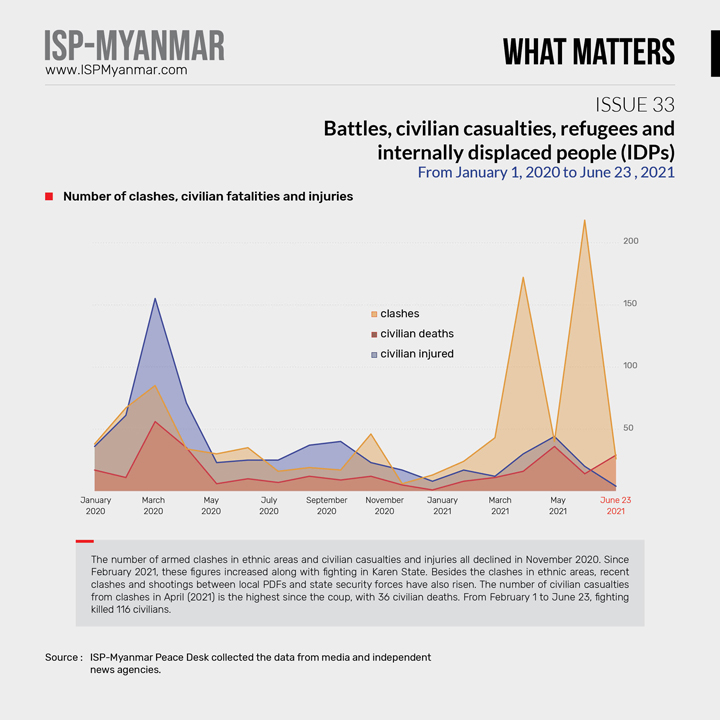
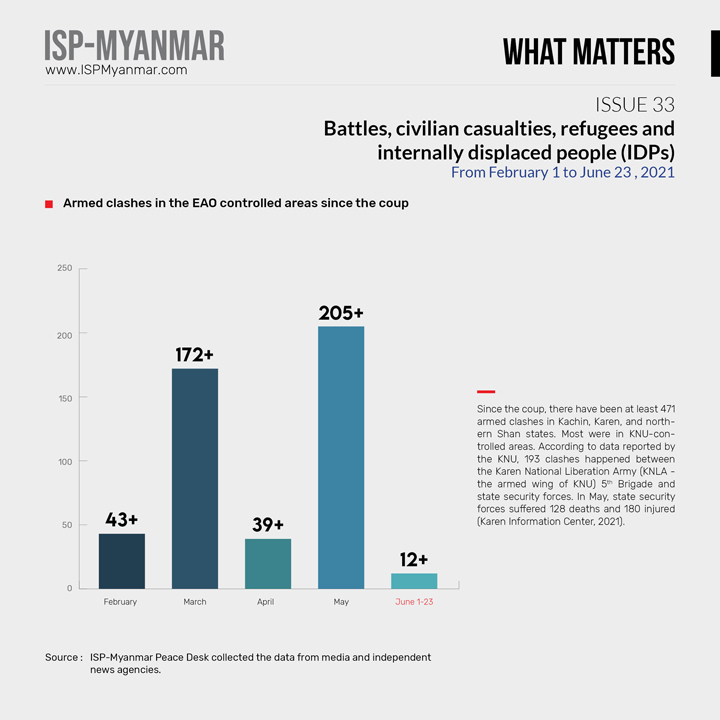
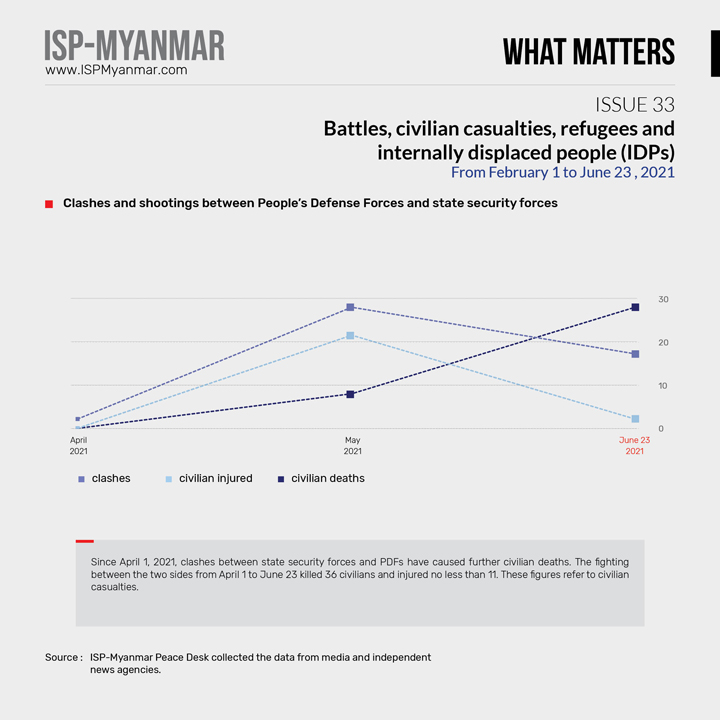
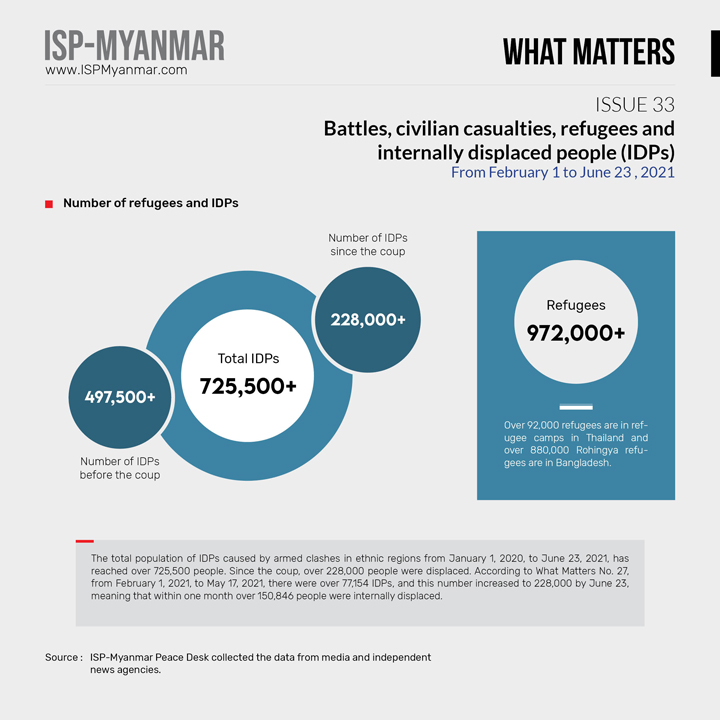
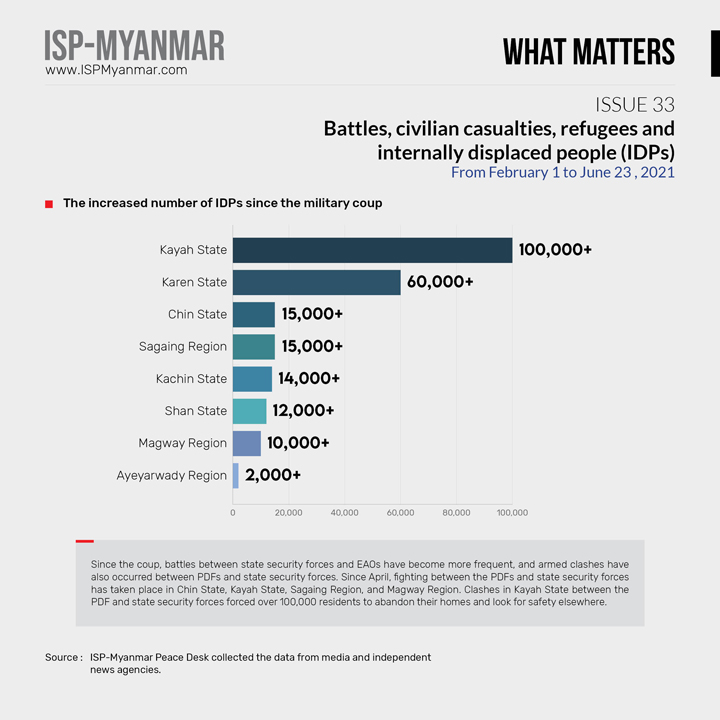
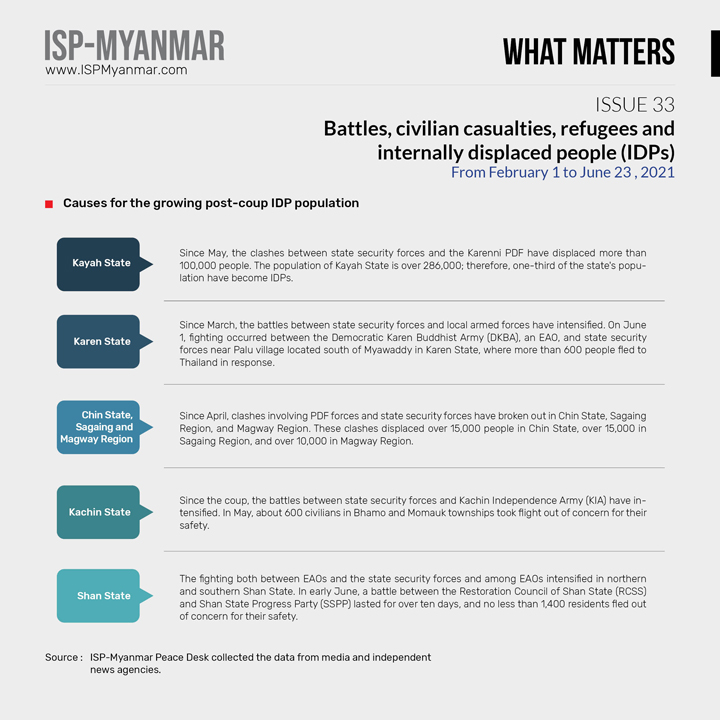
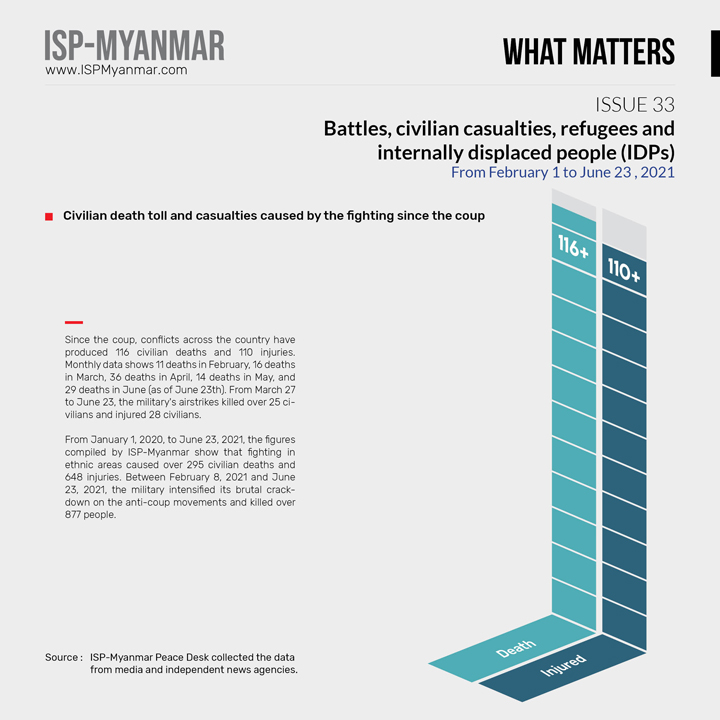
After the coup d’état on February 1, 2021, various forms of mass protests calling for justice erupted across Myanmar. The protests are still happening. At the same time, ongoing armed conflicts take place between ethnic armed organizations (EAOs) and state security forces in the ethnic regions where EAOs are based. Simultaneously, different EAOs fight each other, while fighting also occurs between People’s Defense Forces (PDFs) and state security forces in some areas.
- No less than 500 instances of clashes
Since the coup, at least 499 clashes have taken place, including those in ethnic areas. The highest number of skirmishes involve the Karen National Union (KNU) and state security forces in the KNU-controlled areas of Karen State. According to data reported by the KNU, state security forces suffered 128 deaths and 180 injuries during fighting with KNU forces in its 5th Brigade area during the 194 clashes in May (Karen Information Center, 2021). In Chin State, Kayah State, Sagaing Region, Magway Region, and Mandalay Region, armed clashes also broke out between PDFs and state security forces. From April 1 to June 23, at least 22 clashes happened between the state security forces and PDFs in those areas.
- Over 116 civilian deaths
Since the coup, armed clashes have produced more than 116 deaths and 110 injuries among civilians. Airstrikes launched by the military account for over 25 of the deaths. The clashes between state security forces and PDFs caused at least 36 civilian deaths and over 11 civilian injuries.
- Over 150,000 refugees and IDPs increased
The clashes in the period from May 18 to June 23 produced 150,846 refugees and internally displaced persons (IDPs), which makes for a total of 228,000 refugees and IDPs since the coup. From January 1, 2020, to June 23, 2021, armed clashes led over 725,500 people to become either refugees or IDPs. The battles between state security forces and local defense forces in Kayah State forced over 100,000 people to abandon their homes and go into hiding. This figure indicates that one-third of Kayah State’s population have become refugees and IDPs. Fighting produced over 15,000 IDPs in Chin State, over 15,000 in Sagaing Region, over 10,000 in Magway Region, and over 2,000 in Ayeyarwady Region. While the total number of IDPs has increased to over 700,000, more than 972,000 refugees live in other countries due to the armed conflicts taking place before the coup. More than 880,000 Rohingya refugees live along the Myanmar-Bangladesh border and in Bangladesh, and over 92,000 refugees stay along the Thai-Myanmar border and in Thailand.
∎ Why does it matter?
Looking at civilian fatalities and casualties, their causes, and the number of people displaced by the fighting involving state security forces and EAOs offers a way to examine whether or not armed forces have violated human rights from a transitional justice perspective. Moreover, by looking at the conflicts after the coup, further studies can assess changes in the conditions related to Myanmar’s peace process.
∎ Other relevant readings
Field reports by ethnic news organizations and other independent media groups provide regular updates about the conflict situation and their impact in the wake of the coup. These include reports of clashes in ethnic areas, civilian casualties, refugees, and IDPs. Moreover, records and reports by United Nations organizations like the United Nations Office for the Coordination of Humanitarian Affairs (UNOCHA) and other independent local and foreign organizations also provide information about the ongoing militarized conflicts.
∎ Source
Karen Information Center. (2021, May 30). KNU နှင့် စစ်ကောင်စီတပ်အကြား တစ်ရက်အတွင်း ပစ်ခတ်မှု ၂ ကြိမ်ဖြစ်ပွား၊စစ်ကောင်စီတပ် ၄ ဦးသေဆုံးပြီး ကား ၂ စီးပျက်စီး.
ISP-Myanmar Peace Desk collected data from media and independent news agencies.
